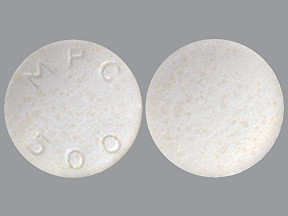ACETOHYDROXAMIC ACID - ORAL
PHONETIC PRONUNCIATION: (a-SEET-oh-HYE-drox-AM-ik AS-id)
COMMON BRAND NAME(S): Lithostat
GENERIC NAME(S): acetohydroxamic acid
Uses
USES: This medication is used with antibiotics and/or surgery to treat types of bladder infections that are caused by certain bacteria. These bacteria cause the level of ammonia in the urine to become too high. This effect can lead to a certain type of kidney stone (struvite). This medication works by stopping the bacteria from making the ammonia. The decreased levels of ammonia can slow the growth of the kidney stones and make the antibiotic work better on your infection.
How to use ACETOHYDROXAMIC ACID - ORAL
HOW TO USE: Read the Patient Information Leaflet provided by your pharmacist before you start using acetohydroxamic acid and each time you get a refill. If you have any questions, consult your doctor or pharmacist. Take this medication by mouth on an empty stomach, usually 3 to 4 times daily or as directed by your doctor. Dosage is based on your medical condition, weight, and response to treatment. Do not take more than 1500 milligrams a day. Use this medication regularly to get the most benefit from it. To help you remember, use it at the same times each day. Tell your doctor if your condition persists or worsens.
Side Effects
Precautions
Interactions
Overdose
Images
Reviews
Faq for ACETOHYDROXAMIC ACID - ORAL
Acetohydroxamic acid (AHA) is an oral medication that is primarily used for the treatment of urinary tract infections caused by urea-splitting bacteria.
AHA works by inhibiting the enzyme called urease, which is produced by urea-splitting bacteria. This enzyme is responsible for converting urea into ammonia, leading to alkaline urine and promoting the growth of bacteria. By inhibiting urease, AHA helps reduce the alkalinity of the urine and prevents bacterial growth.
Some common side effects of AHA include nausea, vomiting, diarrhea, headache, dizziness, and discolored urine. If these side effects persist or worsen, it is important to consult a healthcare professional.
Acetohydroxamic Acid is usually taken orally, exactly as prescribed by your doctor. It is typically taken two to four times daily with food or milk. Make sure to follow the dosing instructions provided by your healthcare provider.
It is important to discuss the risks and benefits of taking AHA during pregnancy or breastfeeding with your healthcare provider. They will consider your individual situation and determine whether the benefits outweigh any potential risks.
It is crucial to inform your doctor about all the medications you are currently taking, including prescription, over-the-counter, and herbal products. Certain medications, such as antacids containing aluminum or magnesium, may affect the absorption and effectiveness of AHA. Your doctor can advise you on any necessary adjustments to your medication regimen.
The duration of treatment with AHA will vary depending on the specific condition being treated and the response to the medication. Your doctor will determine the appropriate length of treatment and may adjust it as necessary.
AHA may interact with certain medical conditions, such as liver or kidney disease. It is important to inform your doctor about any pre-existing medical conditions you have before starting AHA.
If you miss a dose, take it as soon as you remember. However, if it is close to the time for your next scheduled dose, skip the missed dose and resume your regular dosing schedule. Do not double the dose to catch up.
Disclaimer
IMPORTANT: HOW TO USE THIS INFORMATION: This is a summary and does NOT have all possible information about this product. This information does not assure that this product is safe, effective, or appropriate for you. This information is not individual medical advice and does not substitute for the advice of your health care professional. Always ask your health care professional for complete information about this product and your specific health needs.

No Reviews Yet